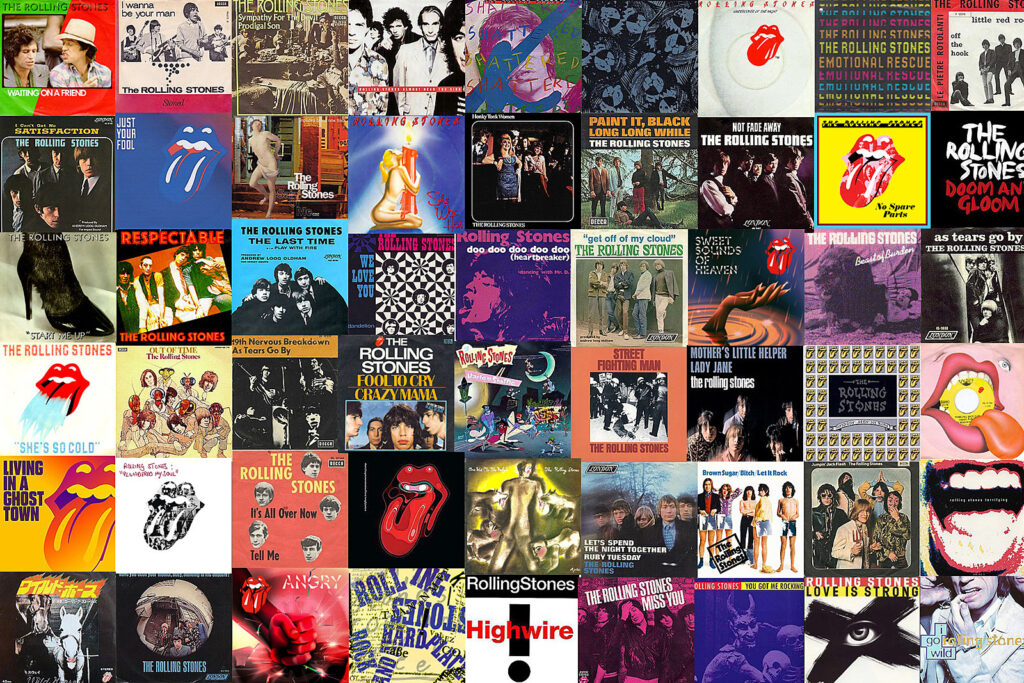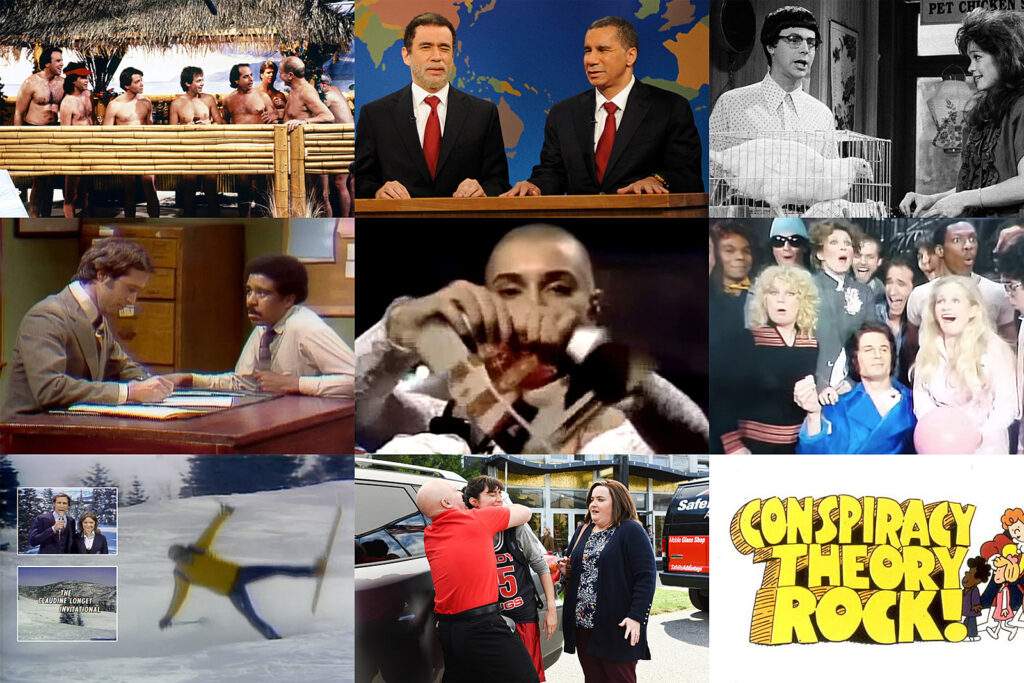The Night Murray and Chase Fought Just Before ‘SNL’ Went Live

Saturday Night Live is, by nature and to some extent by design, a pressure cooker. Performers and writers are expected to compete as much as collaborate in the show’s rush toward the inviolable weekly 11:30 p.m. airtime, and, as more than one backstage personality has said over the years, the Saturday Night Live formula is not conducive to anyone’s mental health.
Still, the always tension-filled SNL atmosphere only once, as far as the voluminous behind-the-scenes history tells it, ignited into actual physical violence. That was the infamous Feb. 18, 1978, episode, when former cast member Chevy Chase returned to Saturday Night Live to host — and found new cast member Bill Murray waiting with closed fists, ready to settle some old scores.
Chase’s Saturday Night Live history is one of rocket-fueled success, followed by general resentment. Chase was the fledgling late-night show’s unquestioned initial star, his recognizable name, face and signature “Weekend Update” showcase all marking him out in Season 1 viewers’ minds as the show’s true centerpiece. The fact that Chase’s charismatic talents were an early favorite of producer Lorne Michaels also added to Chase’s ubiquity in that first season, a fact that the rest of the SNL ensemble quickly tired of.
John Belushi, especially, is said to have resented former National Lampoon costar Chase’s rise, feeling, not without reason, that his superstar status in The National Lampoon Radio Hour and stage hit Lemmings should have carried over into this new, much more visible launching pad. Chase, for his part, didn’t help matters, gradually becoming enamored by his press and, as 1970’s fame staple cocaine entered the SNL offices, unbearably egocentric with his fellow cast members. The tension was exacerbated as the media, seeking heat in this strange new late-night comedy series, began elevating Chase’s profile. An early magazine article about the show focused so squarely on Chase at the expense of the rest of the cast that Laraine Newman, Jane Curtin and Gilda Radner — who’d been condescendingly referred to as “Chevy’s girls” in the piece — co-penned a girl-group style musical number where the three performers crooned their fawning adoration of Chase, their lyrics fairly dripping with unadorned sarcasm.
Chase left Saturday Night Live after the show’s first season to seek big-screen Hollywood success, leaving the cast both relieved and not a little concerned. While SNL’s early ratings grew, the show’s future was still far from certain, and concerns about how the show would fare without its biggest draw vied with Belushi and Dan Aykroyd’s bravado in laying claim to the show’s central stage. When Bill Murray was added to the cast in the second season, Michaels, while weaning the audience with a few sporadic Chase appearances in the first few episodes, was wary about the raw but talented Murray’s reception as “the new Chevy.”
Saturday Night Live’s cultural standing grew exponentially in the years following Chase’s departure, with the young Murray overcoming some early jitters to stake his place alongside Belushi, Aykroyd and Radner as audience favorites. So when Chase, fresh off a very familiar-looking NBC variety special and while shooting the 1978 soon-to-be hit Foul Play, returned to host the 11th episode of SNL’s third season, the burgeoning movie star would find that things backstage had very much changed … and not in his favor.
In their harrowing depiction of the events leading up to what has become the most infamous punch-up in SNL history, authors Doug Hill and Jeff Weingrad, in their 1986 backstage tome, Saturday Night, the blame is spread around fairly evenly. Chase did himself no favors in coming back to his former home with an entitled, even arrogant air, widely attributed to an inflated ego and a growing coke habit, even demanding that current “Update” anchor Curtin be bumped from her position for the night. “Jane, let’s face it,” Chase is quoted as saying in a contentious meeting in Michaels’ office, “you can’t be on the screen with me at the same time.”
Another player in the simmering conflict was Belushi, who most agree fomented resentment about Chase’s return. Chase’s bad reputation (only solidified by subsequent decades’ worth of costars’ appalled anecdotes) hardly needed embellishment to the still-smarting SNL crew, but it quickly became clear to new guy Murray that, if Chase needed to be taken down a peg or two, the roughneck Chicagoan was going to be the designated hammer. As Murray notes in the SNL oral history Live From New York, “That was because I was the new guy, and it was sort of like it was my job to do that. It would have been too petty for someone else to do it. It’s almost like I was goaded into it.”
The main person doing the goading was Belushi, although Chase lays some blame on Michaels who, according to Chase, saw the train wreck approaching and did nothing to avert it. During that week’s writing and rehearsal, Murray increasingly needled the host, at one point bursting into a meeting to relay to Chase the cast and crew’s resentment concerning his antics in the first season and, in a particularly ugly display of the macho posturing that beset SNL’s first five years, belittling Chase’s manhood by referencing Chase’s supposed marital troubles. “Go fuck your wife,” Murray reportedly sneered at an irate Chase, “I hear she needs it.” Chase, never one to let an insult go, replied with an attack targeting Murray’s famously rough complexion, noting that Neil Armstrong had landed on Murray’s face. The stage was set for something to go very wrong between the two.
And it did, at perhaps the worst possible time. Chase, ostensibly preparing for his cold open as his stumblebum Gerald Ford, instead found Murray in Belushi’s dressing room and called the younger performer out. What resulted was a hallway scuffle, both men throwing punches which, perhaps karmically, landed almost entirely on Belushi as he and several others attempted to rein in the combatants. Cooler heads — and the 11:30 deadline — prevailed just in time for Chase to go onstage, but not before Murray got in one of the most quintessential and devastating verbal blows ever. As film director John Landis, a backstage visitor who’d go on to direct Aykroyd and Belushi’s The Blues Brothers in 1980 tells it, as the two flushed and furious performers were pulled apart, Murray spat the insult, “Medium talent!” at the departing Chase.
Chase did the cold open, complete with his Ford’s signature clumsy schtick and inevitable, furniture-smashing fall, and then emerged for his monologue, a long and so-so bit in which the former SNL superstar milked audience applause with pandering cliches designed to elicit a response. In Saturday Night, a shaken Michaels is reported to have murmured, “Chevy doesn’t have it tonight,” and if the episode as a whole doesn’t bear the sentiment out entirely, the pre-show tensions do seem to inform much of Chase’s onscreen interactions with Murray.
After luring “Update” co-anchor Aykroyd away with a fake phone emergency, Chase indeed shared the anchor desk with Curtin, Chase’s smarmy attempt to similarly jettison Curtin leading to Curtin exploding, with no doubt cathartic emphasis, “Go back to Hollywood! This is my show and I won’t be pushed around!” During the goodnights, Chase waves a simple thank you and goodbye, while Murray, clad in a red hoodie, strides in late to the group farewell, pacing restlessly while Belushi and Aykroyd wrestle the unsmiling Murray off in the background. Hill and Weingrad interpret Murray’s mood as “looking as though he might jump over them all to throttle Chevy as soon as the camera went off.” They may be right.
In the many years since then, tempers have cooled, the older Chase and Murray both accepting some blame for the unfortunate incident, even as both actors have left a trail of bad on-set behavior and hurt and resentful costars in their respective wakes. Chase, for his part, strikes an odd balance between letting bygones be bygones and asserting that, had Belushi and others not gotten in his way, Chase would have surprised the street tough Murray with an unexpected physical prowess. The pair would share a memorable scene, riffing with improvisational brilliance in Harold Ramis’ Caddyshack just a few years later, the duo’s begrudging respect for each others’ comic talents sweeping aside memories of a Saturday Night Live dust-up that’s gone down in infamy.
Rock’s 60 Biggest ‘Saturday Night Live’ Performances
Gallery Credit: Corey Irwin
More From Ultimate Classic Rock
Link to the source article – https://ultimateclassicrock.com/bill-murray-chevy-chase-fight-snl/
Recommended for you
-
Roland Juno DS-88 Synthesizer Bundle with Sustain Pedal, Adjustable Stand, Bench, Dust Cover, Austin Bazaar Instructional DVD, and Polishing Cloth
$999,99 Buy From Amazon -
Monoprice Recording Desk with Raised Platform and Keyboard Tray, Workstation, Stable & Lightweight, for Home Studio Stage Right Series, Black
$63,99 Buy From Amazon -
Pop Back Vocal – Large unique 24bit WAVE/KONTAKT Multi-Layer Studio Samples Production Library
$14,99 Buy From Amazon -
Podcast Equipment Bundle for 2 – Audio Interface-All-In-One Dj Equipment with Condenser Microphone for Podcast Recording Gaming YouTube
$119,99 Buy From Amazon -
ZoiYenze 23 Inch Concert Ukulele for Beginners,Basswood Ukuleles Starter Kit for Kids and Students Starter,Hawaiian party instruments Four String Wooden Ukulele(coffee)
$52,99 Buy From Amazon -
Gosila 4 String Banjo Solid Back with beginner Kit Remo Head Coated Top Sapele Body Material Sapele Back Material Type Okoume Neck Material Type
$149,99 Buy From Amazon -
XSONIC Airstep Spk Edition Spark 2&40&Mini&Go&Live&EDGE Foot Controller with 5 Footswitches, 4 Control Modes, 300H Playtime, Hands-free control of Spark for Home and Gig
$76,49 Buy From Amazon













Responses